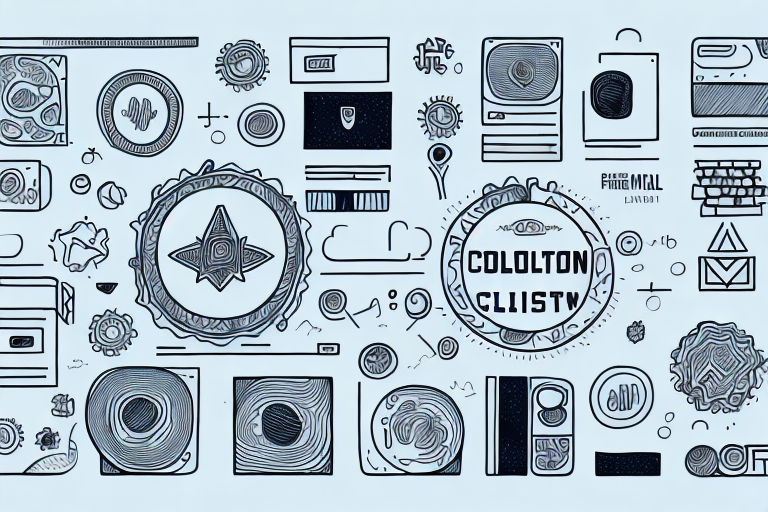In the ever-evolving world of business, brand collaboration has become a powerful tool for growth and success. By partnering with other like-minded brands, businesses can expand their reach, build credibility, and cultivate new opportunities. However, finding the right brands to collaborate with can be a daunting task. In this article, we will explore the strategies and tactics you can employ to discover potential collaboration partners and maximize the benefits of brand collaboration.
Understanding the Importance of Brand Collaboration
Before we delve into the process of finding brands to collaborate with, it's essential to understand why brand collaboration is vital for your business. Collaboration allows you to tap into new markets, leverage complementary expertise, and access the existing customer base of partner brands. The power of partnership lies in the ability to combine resources, skills, and networks to achieve common objectives.
When you collaborate with other brands, you open up a world of possibilities. By joining forces, you can create synergies that lead to innovative product development, increased brand exposure, and enhanced customer experience. The power of partnership in business cannot be overstated. It has the potential to propel your business to new heights and unlock unique opportunities for growth and differentiation.
Imagine the possibilities when two brands with similar values and target demographics come together. By collaborating, you can tap into each other's strengths and create something truly remarkable. Together, you can reach a wider audience, create products that cater to their needs, and ultimately, build a stronger brand presence in the market.
The Power of Partnership in Business
Brand collaboration has the potential to propel your business to new heights. By joining forces with other brands, you can create synergies that lead to innovative product development, increased brand exposure, and enhanced customer experience. Collaborating with brands that share similar values and target similar demographics can unlock unique opportunities for growth and differentiation.
When you collaborate with other brands, you not only expand your reach but also gain access to their expertise and resources. This can be particularly beneficial if you are looking to enter new markets or explore new product categories. By partnering with a brand that has already established a strong presence in a particular market, you can leverage their knowledge and experience to navigate the challenges and maximize your chances of success.
Furthermore, brand collaboration allows you to tap into the existing customer base of your partner brands. This means that you can instantly gain exposure to a new set of potential customers who are already loyal to your collaborator. By offering them a joint product or service, you can create a win-win situation where both brands benefit from the increased customer base and sales.
Identifying Your Collaboration Goals
Before embarking on a quest to find brands to collaborate with, it's crucial to clearly define your collaboration goals. What do you hope to achieve through collaboration? Are you looking to expand into new markets, increase brand awareness, or enhance product offerings? Understanding your objectives will help you identify brands that align with your vision and mission.
Collaboration can serve various purposes, and it's important to have a clear understanding of what you want to accomplish. For example, if your goal is to expand into new markets, you may want to collaborate with a brand that already has a strong presence in those markets. On the other hand, if you are looking to enhance your product offerings, you may want to partner with a brand that has expertise in a specific area.
By identifying your collaboration goals, you can narrow down your search and focus on finding brands that can help you achieve those goals. It's important to find partners who not only align with your vision but also bring something unique to the table. Look for brands that complement your strengths and can add value to your business.
Setting Your Collaboration Criteria
Once you have clarified your collaboration goals, it's time to define the criteria that potential collaboration partners should meet. These criteria will serve as your guiding principles throughout the brand discovery process.
Collaboration is a powerful tool for businesses to expand their reach and create meaningful connections with their audience. By partnering with other brands, you can tap into new markets, leverage each other's strengths, and create innovative campaigns that resonate with your target audience.
However, not all collaborations are created equal. It's important to carefully select your collaboration partners to ensure a successful and mutually beneficial partnership. This is where setting collaboration criteria becomes crucial.
Defining Your Brand's Values
Understanding your brand's values is essential for finding compatible collaboration partners. The brands you collaborate with should share similar values, as this will ensure a harmonious and authentic partnership.
When your brand's values align with your collaboration partner's values, it creates a sense of trust and credibility. This alignment allows you to work together seamlessly, as you both have a shared understanding of what is important and meaningful to your respective brands.
For example, if your brand values sustainability and ethical practices, collaborating with a brand that shares these values will strengthen your message and resonate with your target audience. This alignment can also lead to joint initiatives that promote social and environmental causes, further enhancing your brand's reputation.
Determining Your Target Audience
Knowing your target audience is key to identifying brands that can help you reach and engage with them effectively. Collaborating with brands that have a similar target audience will enable you to maximize the impact of your collaborative efforts.
By understanding your target audience's demographics, interests, and behaviors, you can identify potential collaboration partners that have a strong presence among your audience. This alignment ensures that your collaborative campaigns will be relevant and appealing to your target audience, increasing the chances of successful engagement and conversion.
For instance, if your brand caters to young, tech-savvy individuals, collaborating with a brand that has a strong online presence and appeals to the same demographic can help you tap into their existing audience and expand your reach. This strategic partnership allows you to leverage each other's strengths and create compelling content that resonates with your shared target audience.
Setting collaboration criteria based on your target audience also allows you to explore new markets and demographics. By collaborating with brands that have a different but complementary target audience, you can expand your reach and attract new customers who may have never been exposed to your brand before.
In conclusion, setting collaboration criteria is an essential step in the brand discovery process. By defining your brand's values and determining your target audience, you can identify compatible collaboration partners that will enhance your brand's reputation, expand your reach, and create meaningful connections with your audience. So take the time to carefully consider your collaboration criteria and embark on partnerships that will propel your brand to new heights.
Researching Potential Brands for Collaboration
Now that you have established your collaboration criteria, it's time to begin your research and discover potential brands to collaborate with. Finding the right brand to collaborate with can be a game-changer for your business, opening up new opportunities and expanding your reach.
When it comes to brand discovery, there are various strategies you can employ. One effective approach is to utilize social media platforms like Instagram, Twitter, and LinkedIn. These platforms have become powerful tools for connecting with brands and building relationships.
Utilizing Social Media for Brand Discovery
Social media platforms provide a wealth of information about brands and their values. By following brands that align with your own values and engaging with their content, you can start to build relationships and gauge their suitability for collaboration. Leave thoughtful comments, share their posts, and participate in discussions to show your genuine interest in their work.
Additionally, social media platforms offer features like hashtags and search functions that can help you discover brands that are relevant to your industry. By searching for keywords related to your business, you can find brands that may not be on your radar yet.
Attending Industry Events and Networking
While social media is a great starting point, nothing beats face-to-face interactions when it comes to building meaningful connections. Industry events and networking opportunities provide a unique platform to meet potential collaboration partners in person.
Consider attending conferences, trade shows, and seminars related to your industry. These events bring together like-minded individuals and brands, creating an environment conducive to collaboration. Take the time to introduce yourself, exchange contact information, and have meaningful conversations with other attendees.
During these events, keep an open mind and be receptive to new ideas and possibilities. Sometimes, the most unexpected collaborations can lead to the most fruitful partnerships.
Remember, the goal of attending industry events and networking is not just to collect business cards, but to establish genuine connections. Take the time to follow up with the people you meet, whether it's through email or social media. Nurture these relationships and explore collaboration possibilities that may arise.
Researching potential brands for collaboration requires time and effort, but the rewards can be significant. By utilizing social media platforms and attending industry events, you can expand your network and discover brands that align with your values and goals. So, get out there, explore, and start building those valuable connections!
Approaching Brands for Collaboration
Once you have identified potential collaboration partners, it's time to craft a compelling collaboration proposal and initiate the conversation.
Crafting a Compelling Collaboration Proposal
A well-crafted collaboration proposal is key to capturing the interest and attention of potential partners. Clearly outline the benefits of collaboration, including how it aligns with their objectives and how it can create value for both parties involved.
Negotiating Collaboration Terms
When approaching brands for collaboration, it's crucial to negotiate mutually beneficial terms. Determine the scope of collaboration, including the deliverables, timelines, and any financial arrangements. Be open to compromise and find a balance that works for both parties.
Maintaining Successful Brand Collaborations
Once you have established collaborative partnerships, it's essential to nurture and maintain them for long-term success.
Regular Communication and Feedback
Effective communication is crucial for successful collaborations. Regularly engage with your collaboration partners and maintain open lines of communication. Seek feedback to continuously improve and refine your collaborative efforts.
Evaluating and Improving Collaboration Efforts
Regularly evaluate the impact and effectiveness of your collaborative efforts. Identify areas for improvement and make necessary adjustments to maximize the value generated from your collaborations.
By following these strategies and tactics, you can find brands to collaborate with that will elevate your business and drive its growth. Collaboration has the power to unlock new opportunities, amplify your brand's presence, and create meaningful value for both your business and your collaborative partners. Embrace the power of partnerships and embark on a journey of successful brand collaborations today.
Collab with brands and creators. Request your invite at collabs.io



